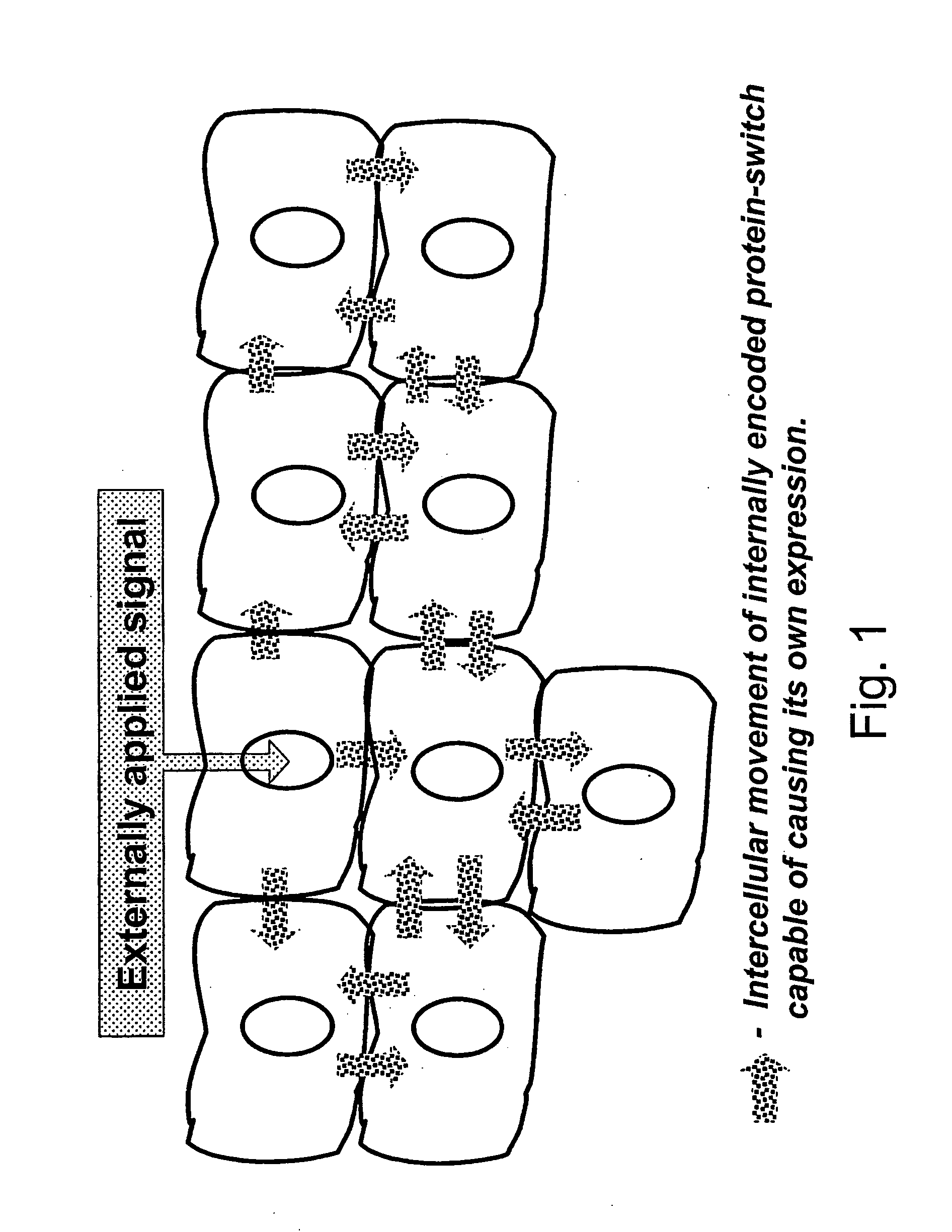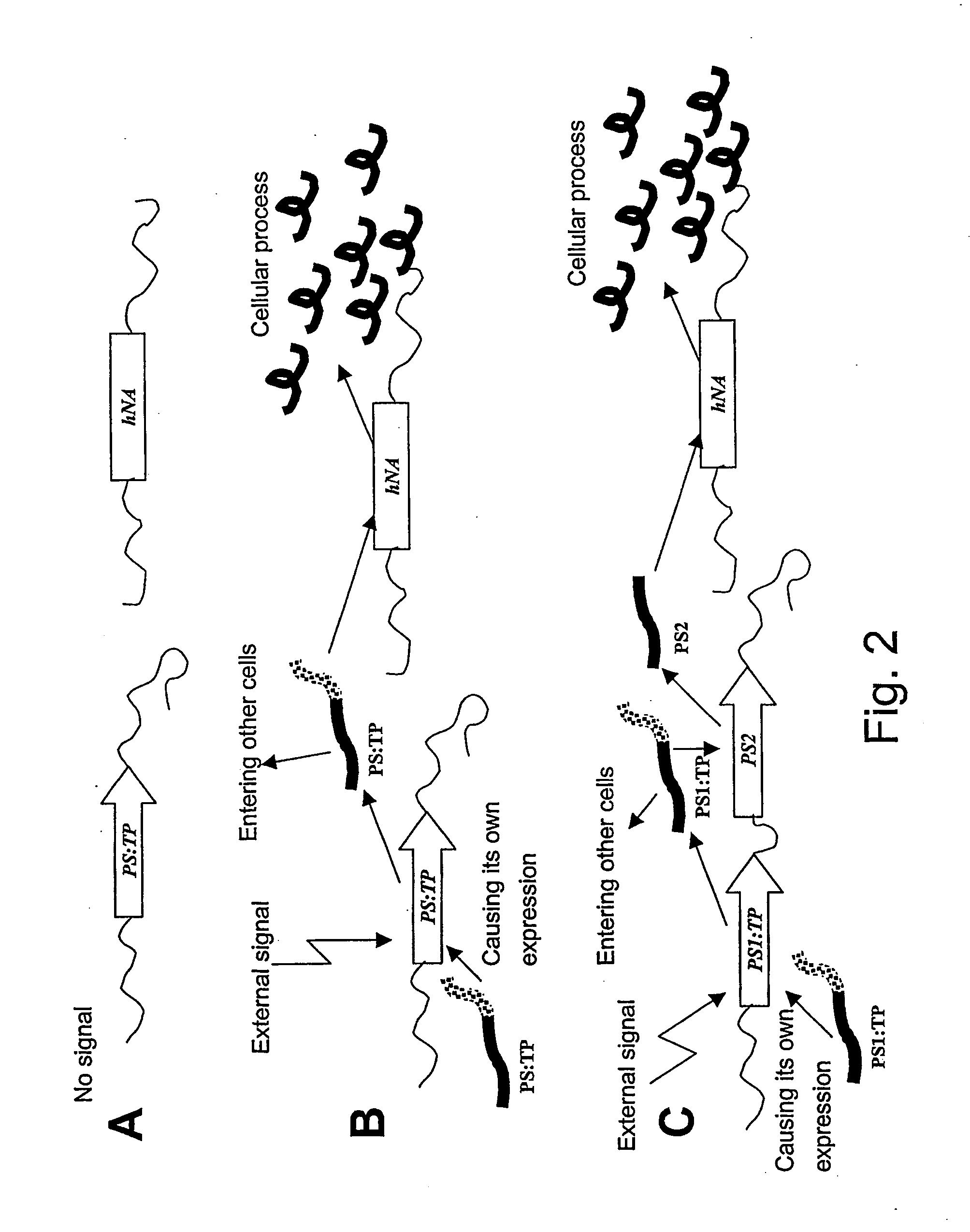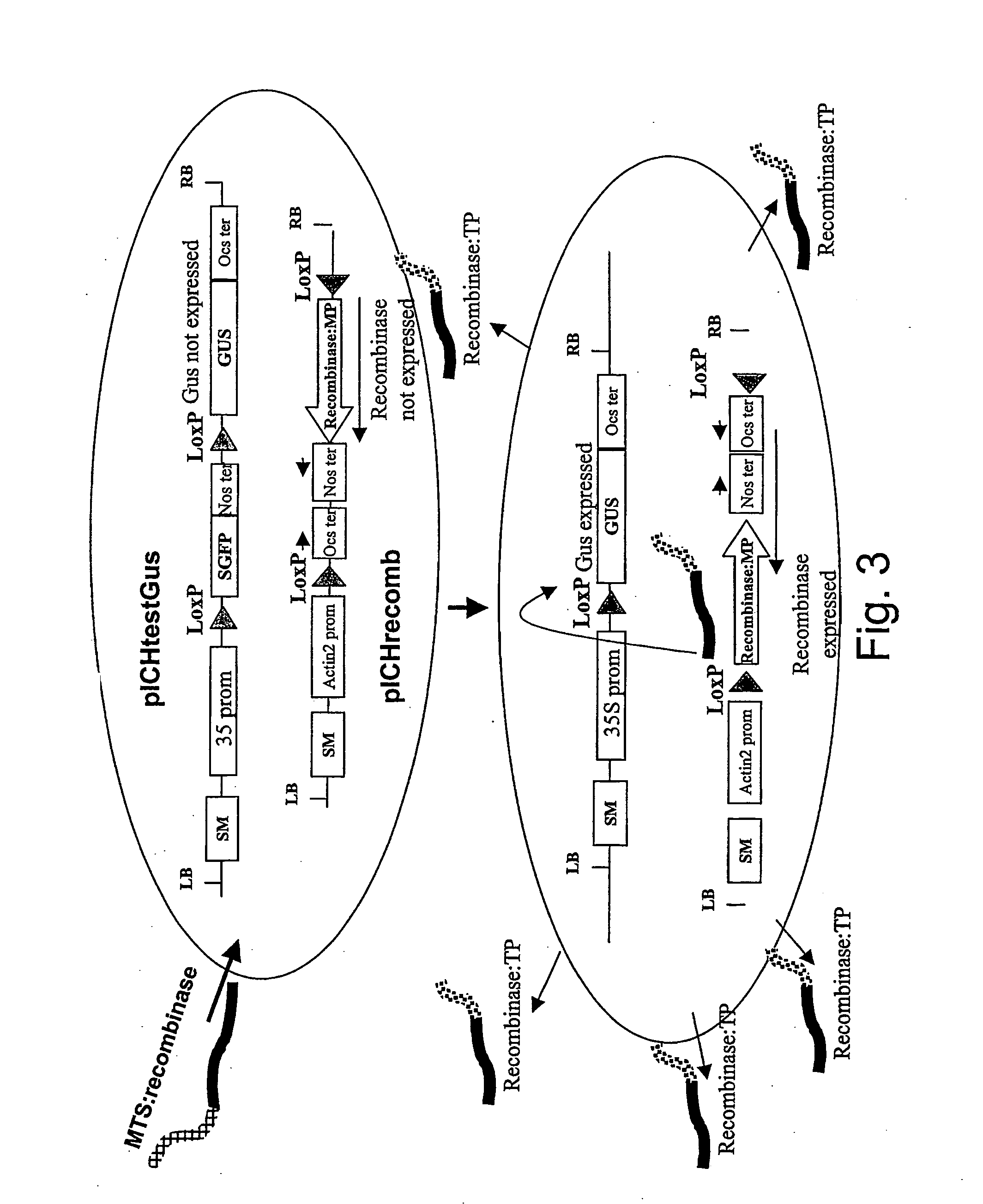Method of controlling a cellular process in a multi-cellular organism
- Summary
- Abstract
- Description
- Claims
- Application Information
AI Technical Summary
Benefits of technology
Problems solved by technology
Method used
Image
Examples
example 1
Detection of the Amplification and Movement of a Protein Switch Using a Gus Test Construct Stably Integrated into the Plant Genome
[0108] Construct pICHrecomb (FIG. 3) contains the cre recombinase fused to the TMV movement protein (MP) followed by a transcription terminator. The fusion protein cannot be expressed as it is not under control of a promoter, and is located between two loxP sites in opposite orientation. This cassette (Recombinase-MP fusion-terminator between Lox sites) is inserted in antisense orientation downstream of the Arabidopsis actin2 promoter. Flipping of the recombinase cassette by action of Cre recombinase (provided externally as said polypeptide of the invention) will place the recombinase-MP gene under control of the Actin 2 promoter and result in its expression.
[0109] PICHtestGus is a test construct designed to detect expression of cre recombinase. It contains, on a binary vector, the 35S promoter followed by a LoxP site, the GFP ORF, the Nos terminator, ...
example 2
Use of a Protein Switch Containing a Site-Specific DNA Recombinase Capable of Intercellular Trafficking for Assembling an Amplicon from Provector Parts that are Stably Integrated into the Plant Genome: GFP Expression
[0112] A binary vector pICHFPinv (FIG. 4) carrying T-DNA with two provector parts was made using standard molecular biology techniques (Maniatis et al., 1982, Molecular cloning: a Laboratory Manual. Cold Spring Harbor Laboratory, New York). Descriptions of provector elements and basic principles of their construction and function are described in detail in patent application WO02 / 88369 (PCT / EP02 / 03476) and in DE 101 21 283. The vector contains a transformation marker (NPTII gene) and the 5′ end of TMV (including the RNA dependent RNA polymerase [RdRp], the movement protein [MP] followed by a subgenomic promoter) preceded by the Arabidopsis actin 2 promoter (An et al., 1996, Plant J., 10, 107-121). The vector also contains the 3′ end of the provector which contains the ...
example 3
Use of a Split Protein Switch
[0118] In order to make a movable switch protein smaller in size, we have split the phage integrase phiC31 (Thomason, Calendar & Ow, 2001, Mol. Genet. Genomics, 265, 1031-1038), using the synechocystis sp. PCC6803 DnaE gene intein. The integrase was split into N and C terminal fragments (pICHRecC and pICHRecN), and the C terminal frament was fused to the MP gene (FIG. 6). The integrase fragment in pICHrecC it is flanked by recombination sites AttP and AttB, and is inactive as it is not under control of a promoter. Recombination between AttB and AttP sites will lead to recombination and flipping of the integrase fragment, placing it under control of the 35S promoter. The N fragment of the integrase in pICHRecN is expressed constitutively in plants, but functional integrase will be formed only after recombination of the pICHrecC T-DNA, expression of the C terminal integrase fragment and intein-mediated integrase assembly. To start the process, the integr...
PUM
 Login to View More
Login to View More Abstract
Description
Claims
Application Information
 Login to View More
Login to View More - R&D
- Intellectual Property
- Life Sciences
- Materials
- Tech Scout
- Unparalleled Data Quality
- Higher Quality Content
- 60% Fewer Hallucinations
Browse by: Latest US Patents, China's latest patents, Technical Efficacy Thesaurus, Application Domain, Technology Topic, Popular Technical Reports.
© 2025 PatSnap. All rights reserved.Legal|Privacy policy|Modern Slavery Act Transparency Statement|Sitemap|About US| Contact US: help@patsnap.com



